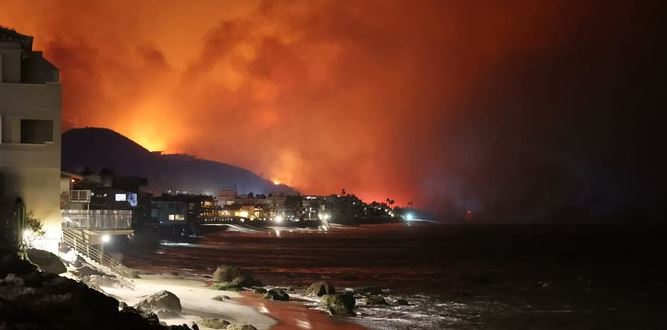The wildfires in Los Angeles are still blazing into Friday evening, prompting new evacuations and igniting public outcry over the city’s firefighting capabilities. The intensity of the fires has severely tested Los Angeles’s fire infrastructure. Fire hydrants in the Pacific Palisades neighborhood, one of five fire zones, ran dry, significantly hampering efforts to control the blaze. Water shortages across other areas further complicated firefighting operations.
11 people dead as LA begins to contain largest blazes. Several off-ramps on the I-405 freeway are closed as firefighters combat Palisades Fire.
Governor’s Reaction: In response to these issues, California Governor Gavin Newsom has demanded answers. He sent a letter to the leaders of the Los Angeles Department of Water and Power and the Los Angeles County Public Works, describing the water supply failures as “deeply troubling” and calling for an independent investigation into the matter.
Infrastructure Limitations: Chris Sheach, an assistant professor of disaster management at Paul Smith’s College, explained to AFP that the city’s firefighting systems are not equipped for such vast wildfires. “Their system is built to fight individual house fires,” he said, highlighting the disparity between the water needs for a single structure versus thousands of acres on fire.
Resource Strain: Janisse Quinones, CEO and chief engineer at the city’s water department, noted that early firefighting efforts quadrupled the normal water demand over 15 hours. Los Angeles Fire Chief Kristin Crowley emphasized the resource shortfall, stating to CNN, “We can no longer sustain where we are,” and calling for more staff, resources, and notably, 62 new fire stations due to a 55 percent increase in call volume since 2010.
Political Fallout: US President-elect Donald Trump, soon to resume his presidency, has politicized the crisis, criticizing Democrats, particularly Governor Newsom, without evidence. Trump has bizarrely linked the water shortages to environmental protection measures for smelt, a fish species far from the disaster areas.
Human Cost and Response: Despite the extensive property damage, with around 10,000 buildings destroyed, the relatively low number of fatalities (11 reported) has been credited to the effective, albeit strained, response from fire chiefs and government officials. Sheach praised the preparedness and skill of California’s firefighters, who are among the best globally due to frequent exposure to such emergencies.
Future Preparedness: Looking ahead, Sheach posed critical questions about enhancing Los Angeles’s preparedness, suggesting that decisions on increasing firefighter numbers or water supplies would depend on community willingness to fund such measures. He described the situation as a “giant risk-reward decision,” where reducing risk involves substantial financial investment.



